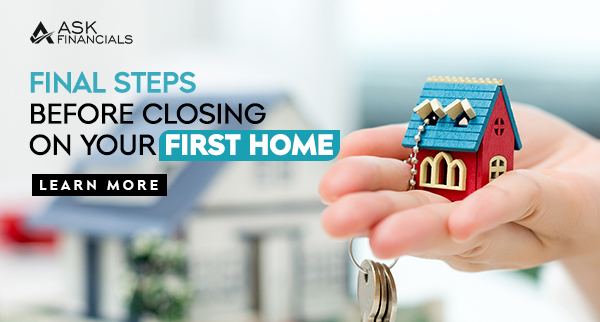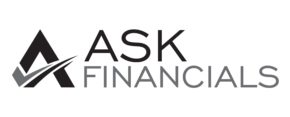Congratulations! You’re Almost a Homeowner—But Not Quite Yet.
You’re at the final stretch of your home-buying journey. You’ve explored different neighborhoods, attended countless open houses, and finally found the perfect place to call your own. The excitement is palpable, but hold on—before you close the deal, there are crucial steps you need to take to ensure a smooth transition into homeownership.
In this article, we’ll walk you through the final steps of buying your first home in Australia. Whether you’re navigating the First Home Buyer Scheme or securing a low deposit home loan, this guide will help you make informed decisions as you approach the finish line.
1. Review the Contract of Sale Thoroughly
Did you know that missing just one clause in your Contract of Sale could cost you thousands of dollars?
Before you finalize anything, carefully review the Contract of Sale. This legal document outlines the terms and conditions of your home purchase, including price, deposit, settlement date, and any special conditions.
Here’s what you need to focus on:
- Price and Deposit: Ensure that the agreed-upon price and deposit amount are correct, especially if you’re benefiting from the First Home Buyers Grant.
- Settlement Date: Confirm that the settlement date aligns with your moving plans, and consider how it fits with any requirements from your First Home Buyer Loan.
- Special Conditions: Look for any clauses specific to your purchase, such as repairs or inclusions of fixtures that might affect your First Home Buyer Guarantee.
Pro Tip: Have a solicitor or conveyancer review the contract. Their expertise will help you identify any red flags or areas that need negotiation. It’s worth the investment to avoid future headaches, especially if you’re utilizing the First Home Guarantee Scheme or other government assistance.
2. Get a Pre-Settlement Inspection
Imagine moving into your new home only to find that the seller took the built-in dishwasher with them—here’s how to prevent that.
A pre-settlement inspection, also known as a final inspection, is your opportunity to ensure that the property is in the condition agreed upon in the Contract of Sale. This should take place as close to the settlement date as possible, typically a week before closing.
During this inspection, check that:
- All agreed-upon repairs have been completed, particularly if they were part of your negotiations under the First Home Buyer Choice program.
- Fixtures and fittings (like light fixtures, blinds, and appliances) are still in place, in line with your expectations from the First Home Buyer Australia guidelines.
- No new damage has occurred since your last visit.
Actionable Tip: Bring a copy of the Contract of Sale to the inspection so you can verify that all terms are met. Don’t hesitate to raise any issues with your solicitor or conveyancer if something seems off, especially if it could impact your First Home Buyer Mortgage.
3. Secure Your Financing
Your dream home is within reach, but without solid financing, it could slip away.
Even though you likely have conditional approval for your First Home Buyer Loan, finalizing your financing is a critical step. This involves:
- Formal Loan Approval: Ensure your lender has given you unconditional loan approval. This means they’ve reviewed all necessary documentation and are ready to fund your purchase under the First Home Buyer Scheme.
- Organize Home Insurance: Most lenders in Australia, including Mortgage House, require you to have home insurance in place before settlement. Shop around for the best deal, but ensure the policy starts from the settlement date.
- Consider Lenders Mortgage Insurance (LMI): If your deposit is less than 20%, LMI is likely required. Ensure you understand its implications on your loan and budget accordingly, especially if you’re using a Low Deposit Home Loan.
Pro Tip: Double-check that you have enough funds for all closing costs, including First Home Buyer Stamp Duty, legal fees, and any lender fees. Being caught short on settlement day can delay the process and potentially jeopardize the purchase.
4. Understand Your Settlement Process
Settlement day isn’t just a formality—it’s the moment when your dream becomes reality.
Settlement is the legal process where the ownership of the property is transferred from the seller to you. On settlement day, your solicitor or conveyancer will handle the transfer of funds and the necessary paperwork.
Here’s what typically happens during settlement:
- Final Payment: Your lender, such as Mortgage House, will transfer the remaining funds to the seller’s account.
- Title Transfer: The property title is officially transferred into your name, making you a homeowner under the First Home Buyer Guarantee.
- Receive Keys: Once the transaction is complete, you’ll receive the keys to your new home.
Actionable Tip: Make sure you’re available on settlement day to handle any last-minute issues. It’s a good idea to keep in close contact with your solicitor or conveyancer to ensure everything goes smoothly, particularly if you’re navigating the Help to Buy Scheme.
5. Plan Your Move Carefully
Moving into your first home is thrilling, but poor planning can turn it into a nightmare.
After settlement, the next big task is moving in. While it may seem straightforward, careful planning can save you time, money, and stress.
Consider these tips:
- Book Movers Early: Secure a moving company well in advance to avoid last-minute scrambling, especially if you’ve timed your move around the First Home Buyer Choice program.
- Utilities and Services: Arrange for utilities (electricity, gas, water) to be connected on your moving day. Don’t forget internet and any other essential services, which may be eligible for rebates under certain First Home Buyer Australia programs.
- Notify Change of Address: Inform your bank, employer, and other relevant institutions of your new address. Redirect your mail to avoid missing important documents, particularly those related to your First Home Buyers Mortgage.
Pro Tip: Create a moving checklist that covers everything from packing to settling in. This will keep you organized and ensure you don’t overlook any important tasks.
6. Settle into Your New Neighborhood
Now that you’ve got the keys, it’s time to make your new house feel like home—starting with the community around you.
Getting to know your new neighborhood is a crucial part of settling into your first home. Take some time to explore:
- Local Amenities: Find the nearest grocery stores, cafes, parks, and healthcare facilities—things you likely considered during your First Home Buyer Australia research.
- Meet Your Neighbors: A friendly introduction can go a long way in building a positive relationship with your new neighbors.
- Understand Local Regulations: Familiarize yourself with any local council regulations that might affect you, such as parking rules or bin collection days. These details might not be top of mind but are essential to your new life as a homeowner.
Actionable Tip: Join community groups or local social media pages to stay updated on neighborhood events and news. This can help you feel more connected to your new area and discover hidden gems, especially those that cater to First Home Buyer Australia residents.
7. Prepare for Future Costs
The purchase may be over, but the financial responsibilities of homeownership are just beginning.
As a first-time homeowner, it’s essential to be prepared for ongoing costs. These may include:
- Home Maintenance: Regular upkeep is necessary to keep your property in good condition. Budget for unexpected repairs and routine maintenance tasks, which can sometimes be covered by your First Home Buyer Scheme benefits.
- Rates and Taxes: Stay on top of your council rates, First Home Buyer Stamp Duty, land tax (if applicable), and utility bills.
- Home Loan Repayments: Set up a budget that comfortably accommodates your mortgage repayments. If possible, consider a fixed rate mortgage to provide stability in your financial planning.
Pro Tip: Consider setting up an emergency fund for your home. This can be a financial safety net for unexpected expenses like major repairs or appliance replacements, keeping you in line with your First Home Buyer Guarantee commitments.
Conclusion: You’re Ready to Close—And Start a New Chapter
Closing on your first home is an exhilarating experience. By following these final steps, you can confidently walk into your new life as a homeowner, knowing you’ve done everything to protect your investment and set yourself up for success. Whether you’ve leveraged the First Home Buyer Guarantee or opted for a fixed rate mortgage, these steps will guide you through the closing process.
Remember, this journey is just the beginning. As you settle into your new home, continue to stay informed and proactive about your responsibilities as a homeowner. Congratulations—your new home awaits!
For more detailed information and personalized advice, contact ASK Financials today.
Call us at 0433 944 055 or
Book a Free Chat: https://tinyurl.com/askfinancials/


